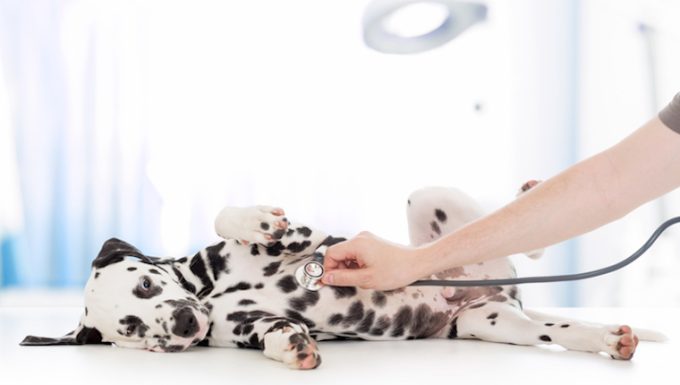Idioventricular rhythm in dogs is a condition that involves an irregular heart beat. It is often a sign of another underlying condition.
Generally, certain breeds are most likely to suffer from the condition. For example, Pugs, Springer Spaniels, and Dalmatians can be predisposed to it.
If you see the signs of the condition in your dog, then get to a veterinarian for a proper diagnosis and treatment.
Here’s what you should know about the symptoms, causes, and treatments for the condition.
Symptoms of Idioventricular Rhythm in Dogs
The condition produces a small range of symptoms. For example, some of the most common symptoms include:
- Fainting
- Irregular heart beat
- Becoming lethargic
- Avoiding exercise
- Weakness
- Breathing problems
Causes of Idioventricular Rhythm in Dogs

The cause of the condition can be a number of things. For example, some of the common causes include:
- Hypothyroidism
- Lyme disease
- Addison’s disease
- Neoplasia
- Kidney problems
- Medication (including digoxin)
- Fibrosis
Additionally, the following breeds seem to suffer from it the most:
- Dalmatian
- Pug
- Springer Spaniel
- Schnauzer
Treatments for Idioventricular Rhythm in Dogs
Firstly, your vet will ask about your dog’s symptoms. Secondly, your vet will ask about your dog’s full medical history. This will include breed-specific problems.
Thirdly, a full physical examination will be carried out. Also, blood and urine tests will be taken.
Ultimately, an electrocardiogram (EKG) will be used to diagnose the condition.
Generally, treatment will depend on the underlying condition. Sometimes, medication will be prescribed to help with your dog’s heart rate.
As always, if your vet prescribes your dog any medicine, make sure to stick to the correct dose and frequency instructions. Also, complete the full course of medicine.
Additionally, in some cases a pacemaker can be fitted to your dog. This will help stabilize their heart beat.
While recovering at home it is important to provide your dog with a quiet and calm environment. Also, cage rest will be needed at first.
Have you ever cared for a dog who suffered from this condition? How did your vet help your dog recover? Let us know in the comments section below.









